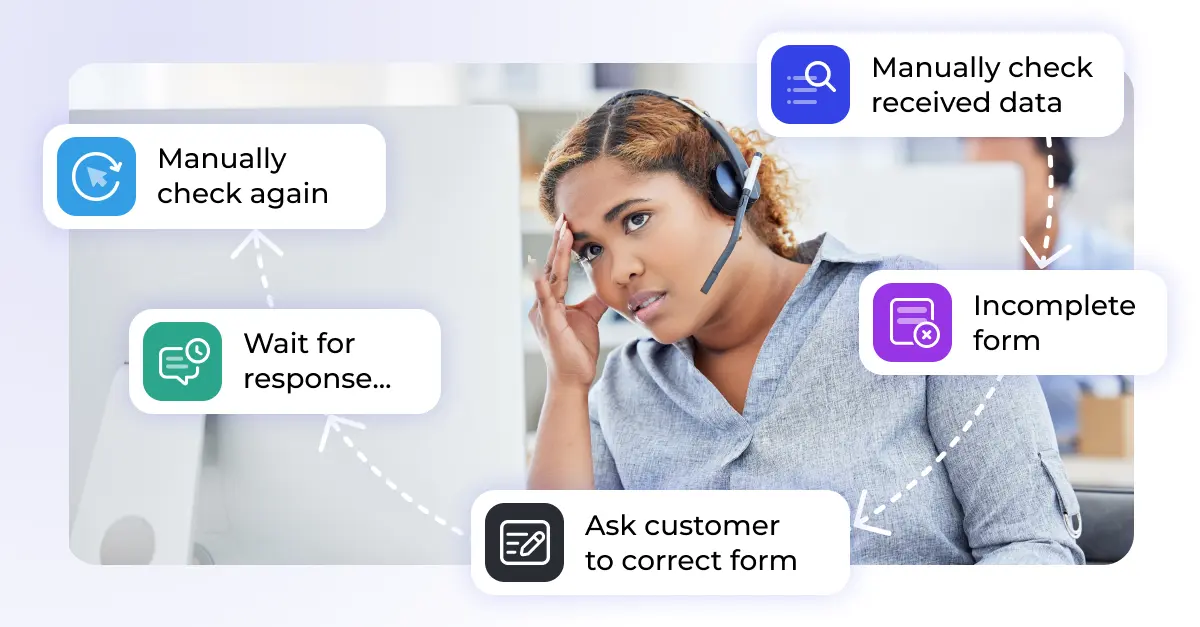Customer service shapes how people remember your brand. 58% of customers switch after a poor experience — but 91% buy again after a good one. Understanding and using your customer service data is key to building loyalty and long-term growth.
In this article, we explain how customer service data can transform your business. You’ll learn what types of data matter, how to collect and analyze them, and how to turn insights into better processes, happier customers, and smarter decisions.
What is customer service data?
Customer service data includes all information that helps you understand how customers interact with your business. This can come from feedback, conversations, or performance metrics. Together, these data points reveal how well your service works — and where it can improve.
Four key types of customer service data
- Customer feedback – surveys, reviews, or post-interaction ratings that show satisfaction and highlight areas for improvement.
- Interaction data – emails, chats, and call logs that reveal common questions, issues, and communication trends.
- Customer profiles – demographic details, purchase history, and preferences that help personalize support and marketing.
- Service metrics – KPIs like response time, resolution rate, and wait time that measure efficiency and quality.
Why customer service data matters
When used well, customer data becomes a powerful driver of growth. Here are the main benefits:
- Better customer experience – spot recurring issues early, fix them fast, and improve satisfaction and loyalty.
- Higher efficiency – identify bottlenecks, streamline workflows, and reduce costs through data-driven insights.
- Competitive advantage – use data to understand what makes your service stand out and adapt faster than your competitors.
- Smarter decisions – base your strategy on facts, not assumptions. Reliable data helps prioritize changes that deliver real impact.
Step 1: Collecting customer service data
Before you can analyze, you need to collect data in a structured, reliable way. These methods help you build a complete picture:
- Surveys – gather direct feedback after a purchase or support interaction. Keep questions short and focused on what you can improve.
- Interaction records – save chat logs, call transcripts, and emails to identify common problems or recurring patterns.
- Feedback channels – provide easy ways for customers to share their thoughts via email, chat, or forms — and monitor them regularly.
- CRM systems – use tools like Zendesk to centralize customer data, track tickets, and connect conversations across all touchpoints.
Step 2: Analyzing the data
Once collected, customer data needs to be cleaned, structured, and interpreted. Here’s how to turn raw information into clear insights:
- Clean the data – remove duplicates and fix missing or inconsistent entries to ensure accuracy.
- Segment customers – group by location, purchase behavior, or service history to find patterns that help tailor your approach.
- Use performance metrics – track KPIs like first-contact resolution, satisfaction ratings, and average response times to measure progress.
- Analyze sentiment – use AI tools or manual review to understand the tone of customer comments and social mentions.
- Visualize results – dashboards and charts make it easier for teams to spot trends and share insights.
- Monitor continuously – customer expectations evolve; regular analysis helps you adapt before problems grow.
Turning insights into action
Data only adds value when it drives change. Use what you’ve learned to improve your operations and customer experience.
- Optimize processes – simplify steps, automate repetitive tasks, and reduce response times to keep service smooth.
- Train your team – focus on key skills such as communication, empathy, and problem-solving. Empower agents to act on insights.
- Upgrade your tools – evaluate whether your current systems (CRM, chatbots, ticketing) meet your needs — and invest where they don’t.
- Personalize support – use customer data to anticipate needs and tailor responses. Proactive help builds loyalty.
- Create a feedback loop – show customers you listen. Act on feedback and share what’s changed because of it.
Example: If your data shows long wait times, simplify your ticket routing flow or use an auto-assignment tool. Small changes can reduce friction and increase satisfaction immediately.
Automating data collection in Zendesk
Customer service data is a goldmine of insights — but managing it manually takes time. Zendesk already offers built-in automation, yet combining it with Knots apps unlocks even more efficiency.
Our tools help you clean, process, and connect data across systems automatically. Whether you need to export ticket data, process attachments, or sync customer details, Knots makes it simple.
Why use Knots?
- Centralize and structure all customer service data in one place.
- Automate repetitive tasks to save time and reduce human error.
- Enhance Zendesk workflows with purpose-built apps and middleware.
Want to see how smarter data use can improve your service? Talk to our team! We’ll help you turn your customer data into better experiences and measurable results.








